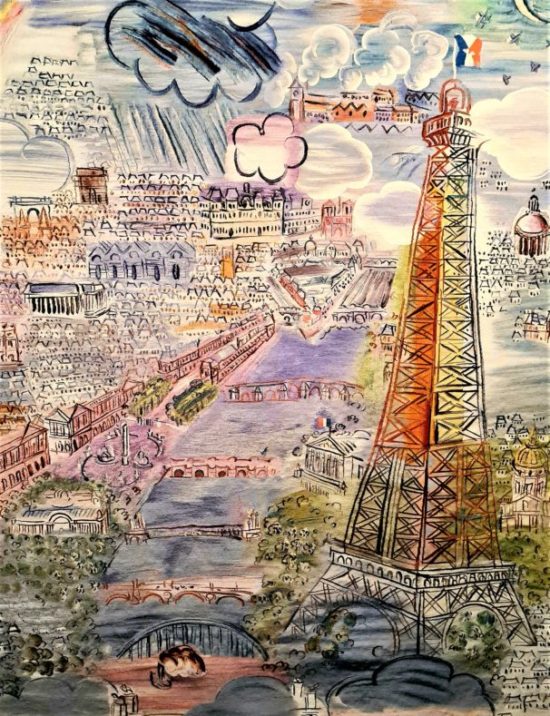
Raoul Dufy exhibition at the Montmartre Museum
If you don’t know Raoul Dufy, run to the Montmartre Museum to see the wonderful exhibition “Le Paris de Dufy”. You still have until January 2, 2022 to enjoy it, and even if you already know this great artist, this is definitely an exhibition not to be missed.
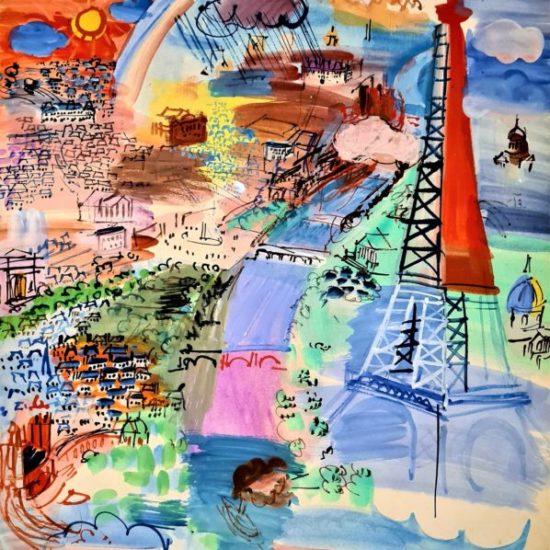
Paris, 1937
Gouache sur papier
Color and Dufy
A great colourist, he works in different mediums: painting of course, but also watercolor, ink, woodcut, tapestry …, in short, his palette of creation is vast! He landed in Paris from his native Normandy at the very beginning of the 20th century. He settled down on the Butte Montmartre, at 12 rue Cortot, where he has his studio for a while, the very location of the Montmartre Museum today. He will also live at 5 impasse Guelma, an address he will keep until the end of his life, his focal point between the many trips he makes, and the studio where he will produce many works.
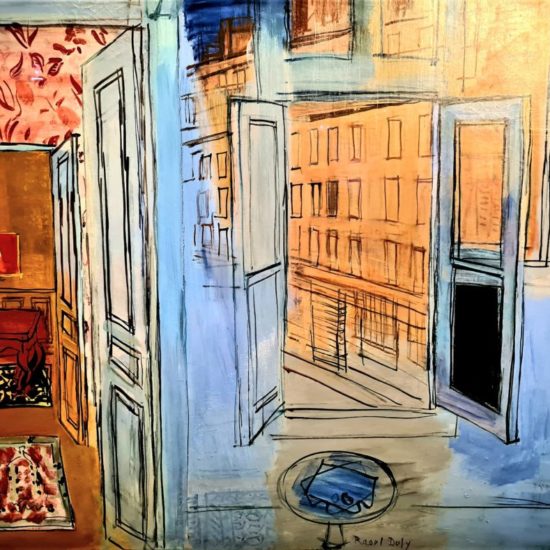
L’atelier de l’impasse Guelma, 1935-1952
Huile sur toile
Dufy's different motifs
A true declaration of love for Paris, the city here becomes a motif in its own right in which all of Dufy’s talent is expressed. A beautiful way of walking in the City of Light for the visitor who wanders through a route where the life of the artist is also visible. In particular, his studio, which in his eyes represents an allegory of painting.

Le bouquet dans l’atelier de la rue Séguier, 1909
Huile sur toile
Also, a few nudes where “the model is almost like furniture that is part of the studio” to use the words of the exhibition curator.

Le modèle, 1933
Huile sur toile
His paintings are also an opportunity for Dufy to express his taste for music, he comes from a family of musicians and he himself plays several instruments.
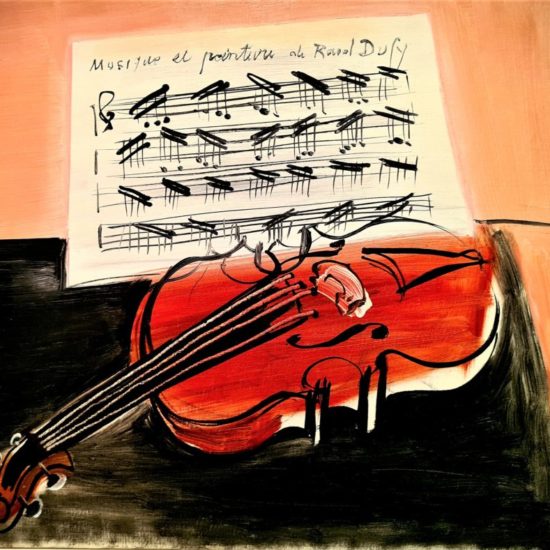
Le violon rouge, 1948
Huile sur toile
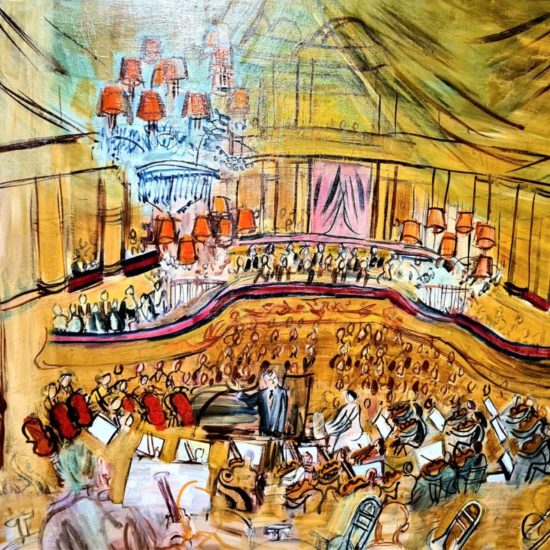
Le grand concert, 1948
Huile sur toile
Decorative arts and Dufy
Raoul Dufy is also interested in the decorative arts and his meeting with Paul Poiret will lead him to create fabrics for the fashion designer with whom he will have a long collaboration.
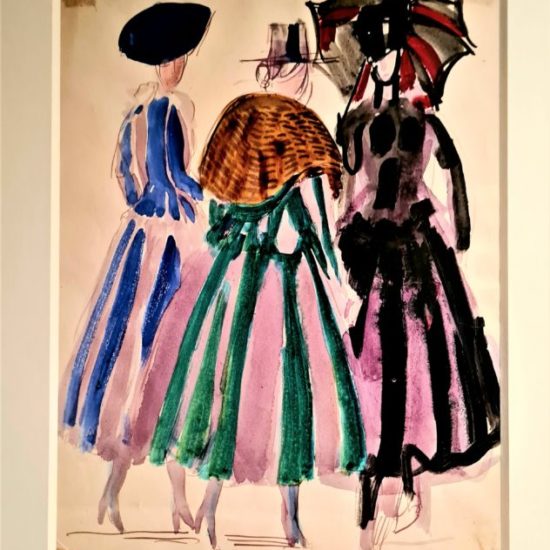
Robes de la maison Poiret, 1920
Gouache sur papier
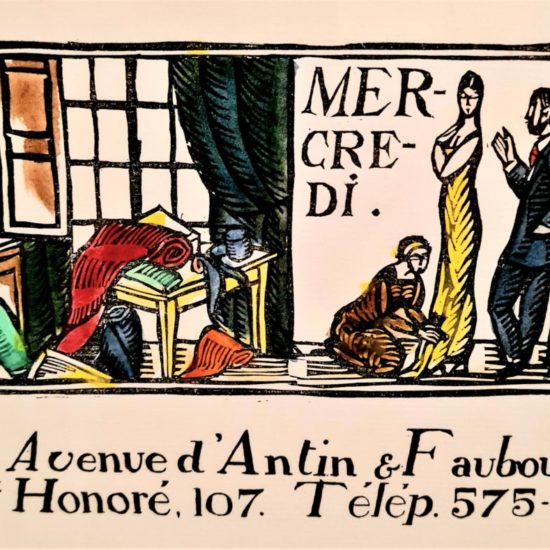
Les jours de la semaine, papier à en-tête de la maison Paul Poiret, vers 1911 Xylogravures rehaussées au pochoir (woodcut heightened with stencil)
The Salon de Paris of Dufy
He is also working on a project that will keep him busy for 10 years around furnishing fabrics; he thus created a collection of furniture, the Salon de Paris, manufactured by the Manufacture de Beauvais. He is the one who designs the tapestries that will cover the chairs, sofas, and even a folding screen on which he offers us an exceptional panorama of Paris!
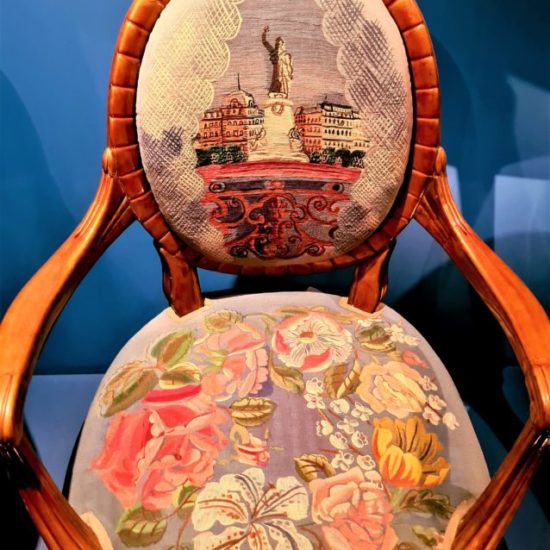
Le salon de Paris / La République, 1924-1933 Les sièges de la manufacture de Beauvais

Le salon de Paris / La République, 1924-1933 Les sièges de la manufacture de Beauvais
The Paris seen from above of Dufy
Which brings us to talk about the very personal way in which Dufy shows us the capital: a city seen from the sky as we can see in the various paintings gathered in this exhibition. Probably inspired by views taken from hot air balloons, very fashionable at the time, and the famous aerial photos of Nadar.
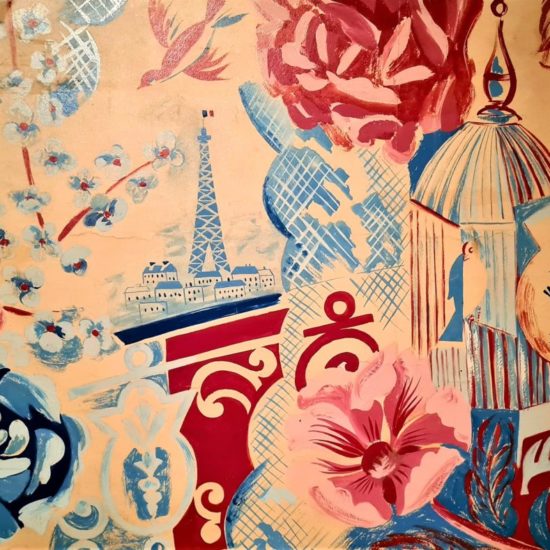
Balcon de Paris, 1925
Huile sur toile
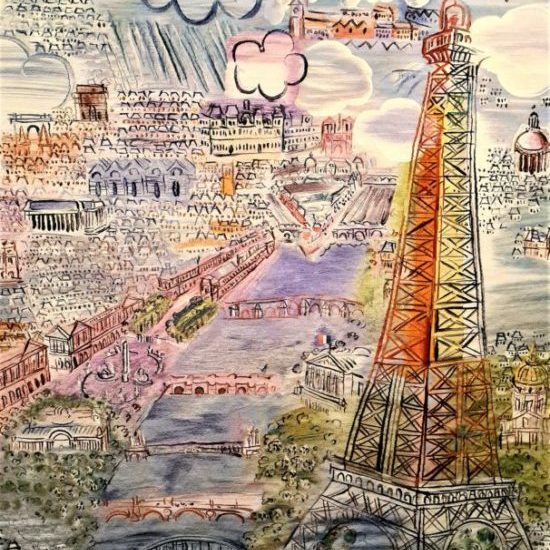
Paris, 1937
Tapisserie, laine et soie, Aubusson
Dufy knows very well how to capture the moments of this hectic Parisian life.
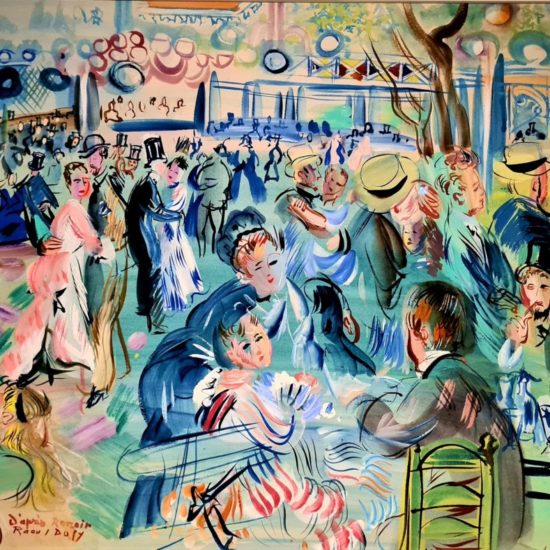
Le Moulin de la Galette, 1937
Aquarelle sur gouache sur papier vélin d’Arches

La réception, 1931-1935
Aquarelle sur gouache sur papier vélin d’Arches
Dufy's illustrative talent
Dufy is also an illustrator. Guillaume Apollinaire himself asked him to illustrate his “Bestiary or Procession of Orpheus” then Dufy illustrate “The murdered poet”, a way for him to pay homage, through his drawings, to the poet then disappeared.

L’éléphant Le bestiaire ou Cortège d’Orphée d’Apollinaire, 1910
Xylographie sur papier
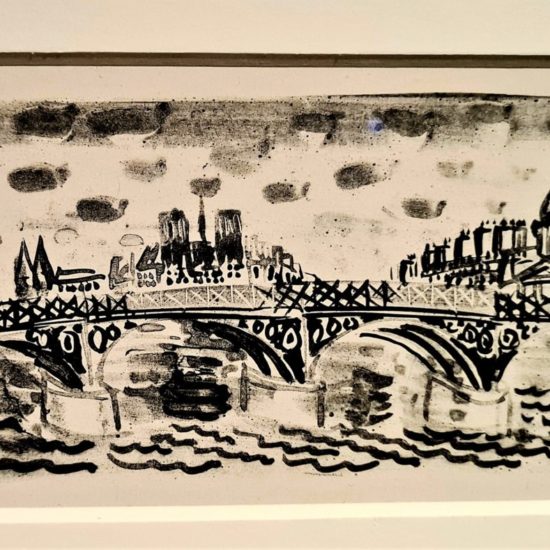
Le pont des Arts, Illustration pour Le Poète assassiné de G. Apollinaire, 1926
Lithographie sur papier
Dufy's Fée électricité
One of the highlights of the exhibition is undoubtedly “La Fée électricité”. This monumental work, one of the largest in the world with its 600 m2, consisting of 250 panels, was commissioned by the Parisian Electricity Distribution Company on the occasion of the Universal Exhibition of 1937. The original is exhibited at the Museum of Modern Art in Paris and here we have a reduced version in the form of lithographs made from photographs of the work. A hymn to the invention of electricity, it also offers the opportunity to contemplate bucolic landscapes and aerial views of Paris.



La Fée électricité, 1952-1953
Lithographies rehaussées de gouache sur papier, gravées par Charles Sorbier chez Mourlot, éditées par Pierre Berès
An explosion of colors full of emotions
“This is where I caught the secret of Raoul Dufy. He wasn’t working, he was having fun. He chased colors like others hunt butterflies. “
This sentence by Roland Dorgeles, which can be read at the entrance to the exhibition, could pretty well summarize the happiness that emanates from Dufy’s paintings. For my part, I will end quite simply with these words: “The Paris of Dufy, an explosion of colors, a firework of emotions, an artistic ecstasy”, because yes it is a real ecstasy that I felt in front of Dufy’s works during my visit of this exhibition at the Montmartre Museum.
This sentence by Roland Dorgeles, which can be read at the entrance to the exhibition, could pretty well summarize the happiness that emanates from Dufy’s paintings. For my part, I will end quite simply with these words: “The Paris of Dufy, an explosion of colors, a firework of emotions, an artistic ecstasy”, because yes it is a real ecstasy that I felt in front of Dufy’s works during my visit of this exhibition at the Montmartre Museum.

